The views expressed in our content reflect individual perspectives and do not represent the authoritative views of the Baha'i Faith.
Native American Messengers of God also appeared in what is now Mexico, in the southernmost part of North America.
Before returning to Deganawida, let’s look at one great “culture hero” (as anthropologists say) who came before him: Topiltzin Quetzalcoatl of Tollan. (His name means “Our Young Prince, the Feathered Serpent.”)
Unquestionably, Quetzalcoatl is Mesoamerica’s most celebrated sage–sovereign. The historical and religious saga of Quetzalcoatl has been recounted in pictorial histories, oral historical tradition, narrative chants and epic poems, such as the Códice Chimalpopoca, the Nahuatl Quetzalcoatl narrative.
Born in 1123 CE, Quetzalcoatl ruled over Tula, the Toltec capital, between 1153 and 1175 CE.
This enlightened emperor inaugurated the “turquoise age” (i.e. golden age) in ancient Tollan, the archaeological site of Tula in the Central Highlands in the heart of ancient Mexico. Toltec civilization flourished from approximately 950 to 1150 CE, before the Mexica (“Aztec”) conquest.
A leading authority on Quetzalcoatl — Henry B. Nicholson, acclaimed as America’s greatest scholar of the Aztec civilization — wrote Topiltzin Quetzalcoatl: The Once and Future Lord of the Toltecs. With a considerable degree of scholarly confidence, Nicholson is utterly convinced that some degree of historicity attaches to Quetzalcoatl:
First, and most importantly, I believe that it is quite possible that there was an “original” Topiltzin Quetzalcoatl, an actual person who lived on this earth but who later apparently became inextricably fused (and confused) with more than one deity—and probably with later rulers as well. – p. 259.
Based on sacred indigenous traditions, Nicholson further relates what little is known about Quetzalcoatl’s religious reforms: “Under his benevolent rule no human sacrifice was permitted, only that of quail, butterflies, snakes, and large grasshoppers.” – p. 10.
Quetzalcoatl challenged the “sacrificial logic” and militarism of ancient Mexican culture, by abolishing the entrenched practice of human sacrifice. Founding a functionally new religion, Quetzalcoatl taught (and exemplified) prayer and penance. Upon this social and moral foundation, Quetzalcoatl established a new, flourishing civilization.
Quite naturally, this incurred the wrath of powerful shaman–sorcerers, guardians of the old religion. His arch-nemesis, Tezcatlipoca (“Obsidian Mirror”), tricked and shamed Quetzalcoatl, and forced him into exile from Tollan, never to return. Or would he?
Yes. According to long-held prophetic tradition, Quetzalcoatl would one day return to reclaim his throne and reinstate Tula as the state capital. David Carrasco, author of Quetzalcoatl and the Irony of Empire: Myths and Prophecies in the Aztec Tradition, writes:
In one of the amazing coincidences of history, the Cortes expedition arrived in the year 1519, known to the Aztecs as the year 1 Reed (ce acatl), which was the birthdate and calendar name of Topiltzin Quetzalcoatl. – David Carrasco, Daily life of the Aztecs: People of the Sun and Earth, p. 216.
In the “Europeanization” of the Quetzalcoatl prophecy, Motecuhzoma (Montezuma, 1502–1520), the last Aztec emperor of Mexico, tragically mistook the Spanish conquistador, Hernán Cortés, for the return of Quetzalcoatl. The Conquest, a collision of two worlds, would one day be reversed, according to the prophecy of Quetzalcoatl’s return.
At the core of the complex legend and mythology that surrounds him, Topiltzin Quetzalcoatl was once a historical figure:
Mesoamerica was clearly an area where a combined religious–secular leadership pattern had evolved to an unusually high degree. It provided an exceptionally favorable cultural climate for a gifted individual of high station to make his historical mark on society. Topiltzin Quetzalcoatl may well have been such a person. I am not suggesting that we might be confronted here with a Mesoamerican Buddha, Zoroaster, Jesus Christ, or Mohammed, for no comparable systematized body of religious doctrine seems to have stemmed from his life or teachings, but his impact on cult activities in Mesoamerica may have been considerable. – H. B. Nicholson, Topiltzin Quetzalcoatl: The Once and Future Lord of the Toltecs, p. 264.
This is a fair estimate of the cultural and religious importance of Quetzalcoatl. Yet the absence of a “comparable systematized body of religious doctrine” — lost in the mists of antiquity — does not mean that it didn’t exist.
Like Deganawida, who came centuries later and who did leave behind laws and teachings, Quetzalcoatl stopped the unnecessary shedding of human blood (whether by ritual or warfare), and promoted a fresh and vibrant civilization.
Popularly, although unofficially, Baha’is widely believe that Quetzalcoatl may well be comparable to Buddha, Zoroaster, Jesus Christ, or Mohammed. These same Baha’is believe that Baha’u’llah represents the return of the spirit and power of Quetzalcoatl. Like the metaphor of the “Feathered Serpent,” Baha’u’llah refers to each Prophet and Manifestation of God as the “Royal Falcon”:
I am the Sun of Wisdom and the Ocean of Knowledge. I cheer the faint and revive the dead. I am the guiding Light that illumineth the way. I am the royal Falcon on the arm of the Almighty. I unfold the drooping wings of every broken bird and start it on its flight. – Tablets of Bahá’u’lláh Revealed After the Kitáb-i-Aqdas, p. 169.
While respecting the ethics of representation, most indigenous Baha’is believe that Baha’u’llah is the spirit of Quetzalcoatl revived — not by conquest, not by hegemonic or triumphalistic appropriation, but by embrace, in a metaphysic of symbolism and synchronicity, of mediation and connection to the global metropolis, the new Tula.
The Resplendent Quetzal is crimson-breasted, with iridescent, emerald plumage that shimmers with golden-green to blue-violet light in the sunlight. Baha’u’llah, many Baha’is believe, may be the return of the spirit and power of Quetzalcoatl for having brought new teachings that restore the dignity of indigenous peoples, with respect for their cultures and sacred traditions, while establishing a connection with the wider world, in a true “unity in diversity” — where the Royal Falcon, as the Resplendent Quetzal, radiates spiritual light in the cloud forests of purity and wisdom.
©2014 by Christopher Buck.


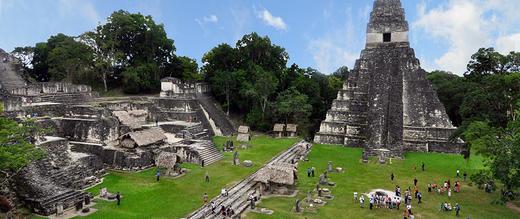


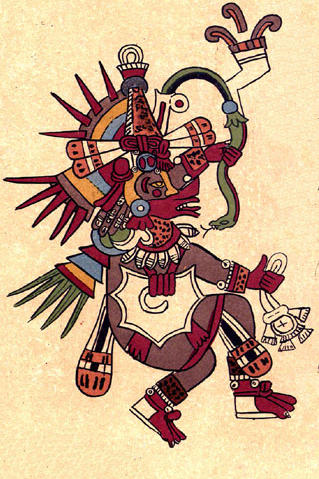

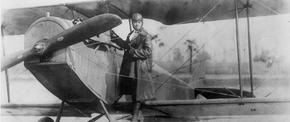
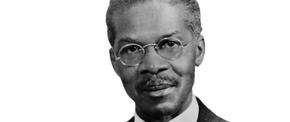
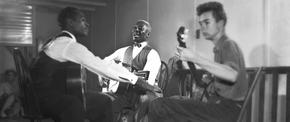









Comments
Sign in or create an account
Continue with Facebookor